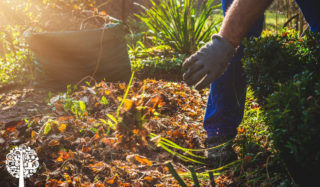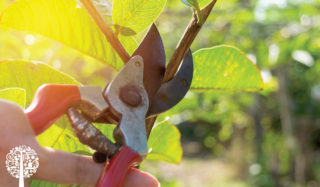October Garden Tips: Time For Fall Gardening
October is the transition between a world of brilliant red and gold falling leaves to bare branches and pumpkin-spiced lattes. Like September, it’s a busy time in the garden. Doing a few things now will help keep the garden cozy during winter’s frosty cold so we can once again enjoy stunning colors and edible goodness when spring comes.
Plant Bulbs
Remember all those spring bulbs you gathered in September? If you haven’t already, now’s the time to plant them. They should be happily covered with soil before heavy frost sets so they can start to form roots, especially the smaller crocuses and snowdrops planted closer to the ground’s surface.
Weed
It’s essential to keep up with weeding. Crabgrass, lamb’s quarter, and thistle are some of those pesky weeds that develop seed heads in late summer and early fall. By nipping them in the bud (so to speak), you can cut down on spring weeding now.
Cut Back Dying Perennials
As fall perennials such as asters start to fade, cut them back. It helps send energy to the roots for winter and gives you space to plant bulbs around them.
Lift Dahlias
Dahlias will bloom straight through September but won’t like the wet and cold of late October. So lift them around the middle of this month for preservation and re-planting next year. Cut back the dying leaves, leaving a short stem protruding out of the ground, then dig them out or lift them from the container. Let the tubers dry and then store them inside a garage or basement throughout the winter.
Improve Soil Health
October is a great time to add nutrients to the soil. After most of the garden has gone dormant, add a fresh layer of compost, rotted manure, shredded leaves, or even topsoil. Work it into the existing soil structure to add microbial life and to keep all those ruminating roots healthy over winter.
Vegetables
If green tomatoes are still on the vine, pick and ripen them indoors. Place them in a bowl by a window, or try putting them in a paper bag with an apple or banana. The fruit releases ethylene which promotes ripening.
If you haven’t already, now is also the time to plant onions, garlic, and shallots for late winter or early spring harvest.
Trim and Pruning
While most shrubs and evergreens prefer a spring prune, some can be shaped now. Hellebore is one of the first perennials to put on a show in late winter and early spring. So now’s a good time to cut off dead stems and leaves and give them a top dress of soil and compost.
Cut back Mediterranean shrubs like rosemary and lavender after flowering, but don’t touch French lavender until spring. Likewise, an evergreen yew hedge can get an annual haircut in early autumn. Other trees, such as flowering dogwood, are happy to be pruned before they set buds for next year. And don’t forget you can cut back everbearing two-crop raspberry canes to the lowest part of the cane that bore late summer fruit.
Most other fall-blooming shrubs, such as hibiscus and panicle hydrangeas, can be left until spring to be pruned. The browning flower heads of the hydrangeas add a bit of dimension to the fall garden.
Set Up The Cold Frame
October’s a good time to do some yearly cold-frame maintenance. Ensure the transparent cover isn’t dirty and all gaps in the frame are sealed to keep winter cold out.
It’s sad to say goodbye to the growing season but take heart that warmer spring days will return as they have south of the equator. In New Zealand and Australia, it’s time to plant peas, carrots, and other summer vegetables. It’s warm enough for annuals to find homes in freshly turned soil, and in places like Christchurch, cherry blossoms are in bloom at New Zealand’s Botanical Gardens.
No matter where you live, October is about Halloween. A time to enjoy a spiced pumpkin latte and think about the garden joys to come. Stay tuned for next month’s gardening tips as we garden together!








